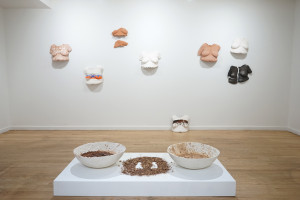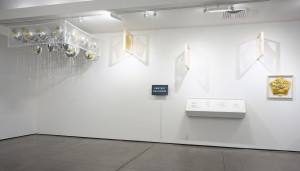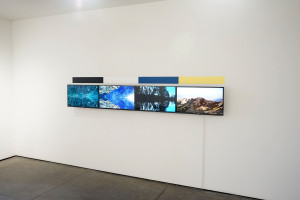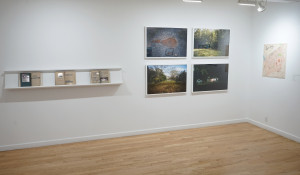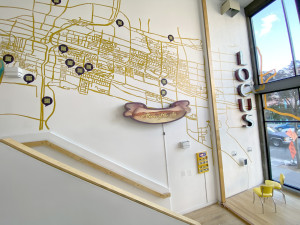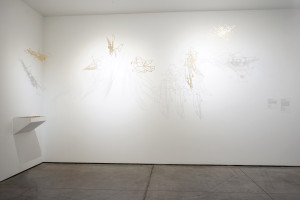
Steven Yazzie, ^^^^ (BWBY - Black White Blue Yellow), 2017, still from 4-channel video, 13:21, dimensions variable
Counter Mapping
October 16, 2021 – January 22, 2022
View Fall/Winter Program Calendar
View Counter Mapping Brochure with the curators’ essays
View installation photos
Listen to Indigenous Mapping: Jim Enote, Joe Bryan & Laura Harjo
516 ARTS presents Counter Mapping, a group exhibition and series of public programs focusing on map-related artworks by 14 local, national, and international artists and art collectives. Co-curated by Viola Arduini and Jim Enote (Zuni Pueblo), the exhibition engages with geography, identity, politics, and the environment through painting, sculpture, photography, video, and installation. “Counter mapping” is a practice of mapping against dominant power structures to reclaim stories and memories of place.
This exhibition is inspired in part by Jim Enote’s work on a counter mapping project he led for the A:shiwi A:wan Museum and Heritage Center at Zuni Pueblo, where he invited several Zuni artists to create maps of the region from a Zuni perspective. He says “It has been said by many that more lands have been lost to Native people through mapping than through physical conflicts.”
Counter Mapping springs from a time when maps have acquired a central presence in our lives. From election maps, to color-coded data collection on the Covid-19 pandemic, maps have become a familiar and often contested visual language. The exhibition challenges the common idea of maps as objective and universal tools for geographical knowledge. Conventional Western mapping has been historically used to track, register, and achieve land exploitation. Today, with processes such as gerrymandering, mapping performs an important role in political, social, and cultural systems. This exhibition investigates how different ways of tracking and mapping affect the meanings and perceptions of places, and reflect upon the power structures that define those views.
The co-curators of Counter Mapping examine diverging approaches to mapping from their own experiences – Jim Enote as an Indigenous leader, activist and farmer, and Viola Arduini as an immigrant and educator.
They have included work by artists Val Britton (Portland, OR), Felipe Castelblanco (Colombia/Switzerland), Cortney Metzger (Osage - Albuquerque, NM), Shannon Rankin (Roswell, NM), Jamie Robertson (Huston, TX), Ana Serrano (Portland, OR), UglyJerry, Steven Yazzie Navajo - Denver, CO), Mallery Quetawki (Zuni Pueblo - Albuquerque, NM), Drew Trujillo (Albuquerque, NM), Minnoosh Zomorodinia (San Pablo, CA), and collectives Basement Films (Albuquerque, NM), Cog*nate Collective (San Diego, CA), and Friends of the Orphan Signs (Albuquerque, NM).
These artists question what constitutes a map, what aspects of the land are mapped and for what reason. For example, Val Britton examines the marks and symbols that compose maps, creating immersive and site-specific installations for the public to explore. Jamie Robertson creates counter narratives that delve into the artist’s African American heritage. The Albuquerque collective Friends of the Orphan Signs offer a communal and public archive that expands outside the gallery space and invites the audience to participate.
PRESS
“Ana Serrano at 516 Arts” by Michael Abatemarco for Pasatiempo/Santa Fe New Mexican
“Exhibit uses art to reclaim stories and memories of place” by Kathleen Roberts for the Albuquerque Journal
“CNM Art Students Exhibit in Prestigious 516 Arts Show” from Central New Mexico Community College


